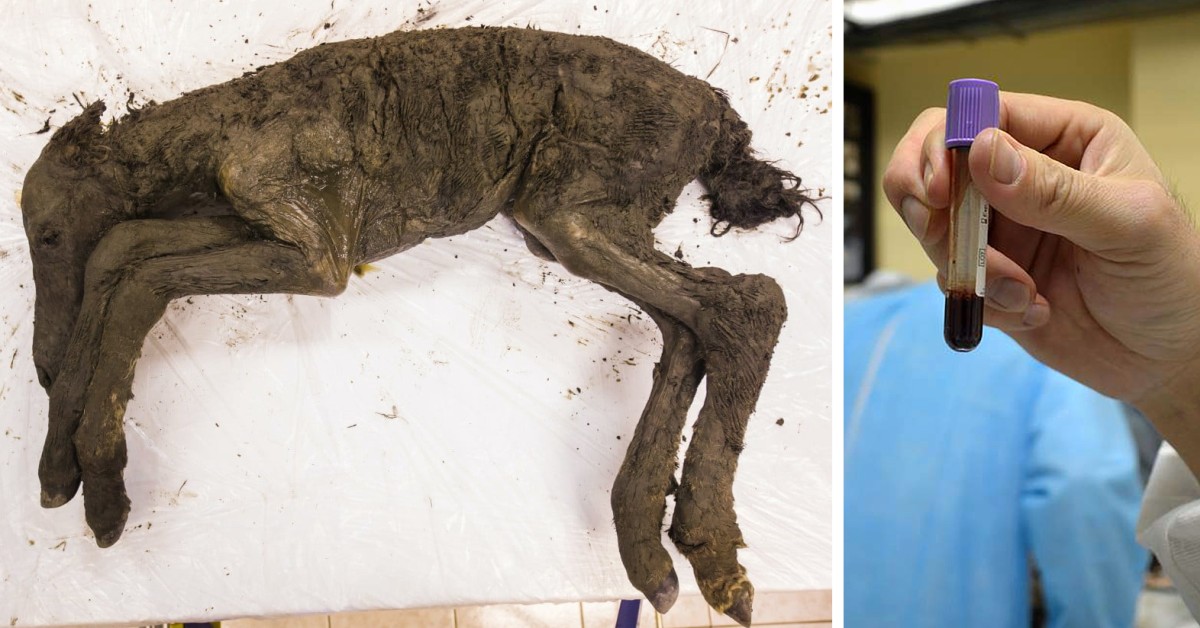A blood sample believed to be the oldest in the world has been found in an ancient mummified foal, boosting hopes of bringing extinct species back to life.

Bringing back extinct animals through the cloning of ancient DNA is a dream shared by many, from conservationists to filmmakers. Although we haven’t achieved this goal thus far, that doesn’t mean that we are not approaching the possibility. In fact, a remarkable discovery in Siberia suggests that we may be on the cusp of a crucial advancement in this endeavor.
In a recent development, scientists successfully retrieved liquid blood from the mummified body of a 42,000-year-old extinct baby horse. The remarkably well-preserved remains of the young male foal were found in the Batagaika crater located in Yakutia, northern Russia.
It is believed to be the oldest blood ever found – and raises optimism about the possibility of cloning back to life the long-gone Lenskaya species of prehistoric horse that roamed Yakutia, the coldest region in Russia, back in the Upper Paleolithic (Late Stone Age).
The tiny fossilized specimen was only one or two weeks old when it died, and remained in such incredible condition that even its hair was preserved.

An international team of scientists at the North-Eastern Federal University in Yakutsk later discovered much of the foal’s inner organs were also kept in amazing condition, thanks to its favorable burial conditions in the permafrost. So much so that they managed to take liquid blood samples from heart vessels, which they call the “oldest blood in the world”.
“The autopsy shows beautifully preserved internal organs. Samples of liquid blood were taken from heart vessels – it was preserved in the liquid state for 42,000 years thanks to favourable burial conditions and permafrost. The muscle tissues preserved their natural reddish colour. We can now claim that this is the best preserved Ice Age animal ever found in the world,” Dr Semyon Grigoryev, head of the university’s Mammoth Museum, where the research was done, told The Siberian Times.

Now, the researchers are hoping to collect viable cells from the foal in order to clone the species, which they readily admit will hopefully pave the way to the ultimate goal: cloning a woolly mammoth.
The scientists from the University and the South Korean Sooam Biotech Research Foundation said they are “confident of success” in extracting cells from this foal in order to clone its species – the extinct Lenskaya breed – back to life.
In fact, work is so advanced that the team is reportedly choosing a mother for the historic role of giving birth to the comeback species.
Michil Yakovlev, editor of the university’s corporate media, said: “Hopefully, the world will soon meet the clone of the ancient foal who lived 42,000 years ago.”

However, to clone the animal the scientists would have to extract and grow viable cells from the ancient DNA, something that has never been successfully done before. And even if they managed to partially reconstruct the DNA, sequencing the complete genome of an extinct animal is almost impossible, so inserting the partial genes into the living embryo of a close-living relative would be the most viable method. For a woolly mammoth, this would be the Asian elephant. For the Lenskaya horse, the researchers chose the Korean horse, a successor to the Mongolian horse, one of the oldest, and hardiest, breeds.
The scientists admitted that they have been through many unsuccessful attempts, but say they are confident they will ultimately succeed.
So, resurrecting long-extinct animals could be on the horizon. However, it’s not just a technical matter, but an ethical one too. Could it be that scientists are so preoccupied with whether or not they could do it, that they never stop to think if they should?
Sources: 1, 2, 3
